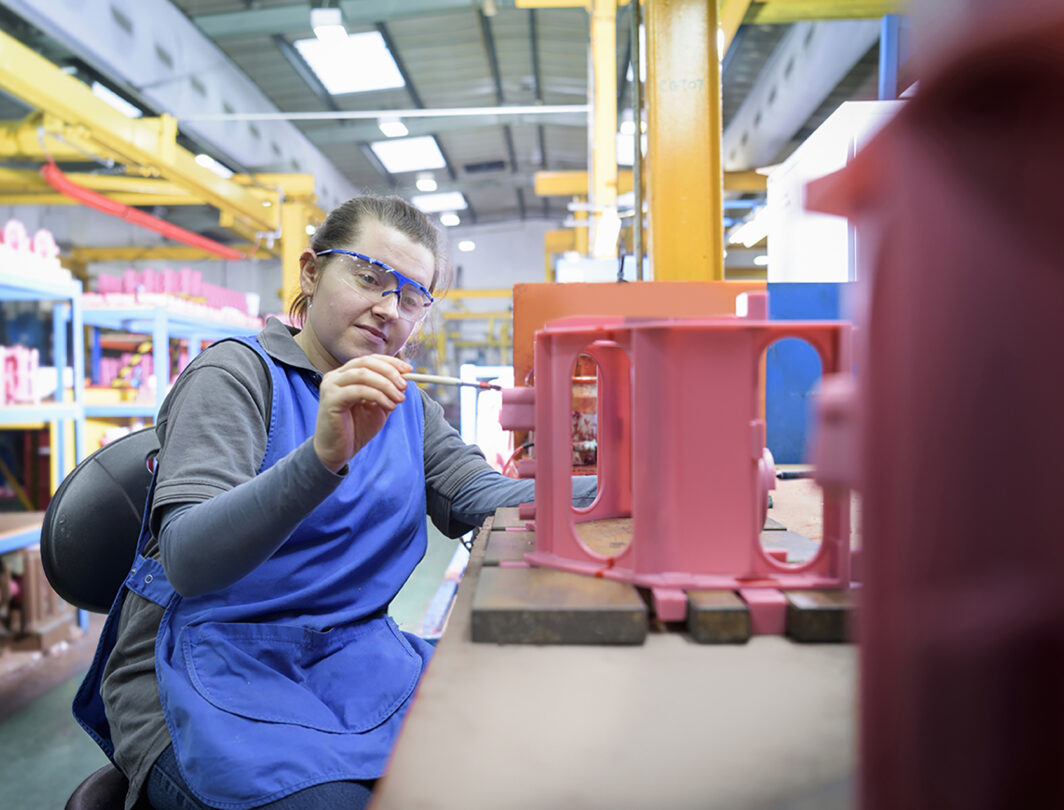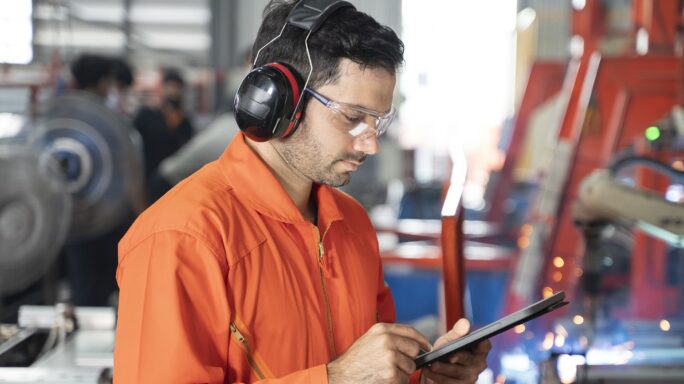7 circular economy implementation tips for manufacturers
Are you preparing to implement a circular economy in your manufacturing company? These business tips will help you build the foundations for success.

Are you looking to reduce waste and make your organisation more environmentally friendly, potentially increasing turnover as you do so?
If that sounds appealing, now’s a great time to take action.
Rather than carrying on with the wastefulness of the current production cycle where goods are manufactured, used, and thrown away, you’re joining a forward-thinking group of UK manufacturers who are waking up to the benefits of a more circular product lifecycle.
This shift in emphasis aims to reduce waste and reuse materials, and is known as the circular economy.
You’re on the crest of the wave, and refocusing your product lifecycle around predictive maintenance, recycling, remanufacturing, and refurbishment will win you financial benefits in the long run, including:
- New revenue sources from ‘officially refurbished’ second-hand products
- Efficiency savings and reduction in spend on ever-increasing resource costs
- Increased market share from a ‘green’ brand image.
So, what should you do to implement it and what common pitfalls should you avoid? Below, we’ve laid out seven tips to help you get started.
1. Create a solid business case for a circular economy
Reducing your organisation’s carbon footprint is a worthy goal in itself. Realistically though, if you want your circular economy implementation to be seen as a priority you’ll have to show the board some solid numbers.
Just like any type of organisational change, enthusiastic buy-in will make all the difference getting everyone else on board. Your business case is the first step in achieving this.
Needless to say, it’s worth taking your time here.
Go into depth about the benefits of embracing the circular economy, and provide some realistic numbers to support your claims.
Take the three areas listed above (new revenue sources, efficiency savings, increased market share) as your starting point, and drill down from there.
2. Avoid doing too much too soon
The benefits the circular economy offers manufacturers are enticing, and now’s the time to move on this front – climate matters have never weighed more heavily on people’s minds and this is your opportunity to make a real difference.
Still, don’t be tempted to rush.
Better a phased, well-thought-out implementation with long-term results than going all out and failing to make the required impact.
The key to success here is to embed manageable chunks of change into your organisation’s routine. For example, start with setting up a refurbishment programme to repair and resell second-hand products.
Once you’ve trained your staff, successfully launched the programme and are starting to get good feedback from customers, move on to the next phase.
No action is too small, so don’t be afraid to build up gradually. Even if your first step is as simple as making all your packaging recyclable, it’s a solid start. Everything adds up.
3. Keep everyone in the loop
Think about how each phase of your circular economy implementation would impact your wider workforce. If the burden seems too much in too short a space of time, rethink your plan and accommodate their concerns.
This is a very easy issue to address.
Your colleagues are – at best – an instant message away. All you have to do is ask them for help, and more often than not they’ll happily oblige.
Practically speaking, you might want to assemble a representative product team. Implementing a circular economy is a transformation that will affect every single department of your organisation, so make sure everyone’s on the same page and ready to work with you.
Your sales team will have to rethink how they sell your products; your supply chain will need to adapt to new patterns of supply/return; the amount and type of materials you need will potentially need to change.
And that’s just the tip of the iceberg.
Rather than second-guessing the potentially challenging adjustments people will need to make to deal with these issues, let them tell you themselves.
By including representatives of all key stakeholder groups in your project team, you’ll increase the efficiency of the implementation, win buy-in from on-the-ground employees, and, ultimately realise more of those benefits mentioned above.
The perfect circular economy implementation team will vary from organisation to organisation, but your basic list of internal stakeholders should look something like this:
- Supply chain and logistics: If you’re moving to a buy-return-service-send model, you’ll need to make sure your supply chain is geared to this before making the switch.
- Procurement: How you source your materials and parts may need to change if you’re looking for less wasteful alternatives.
- Sales and marketing: You’re moving away from the assumption that after a certain period of time, a product will become obsolete and your customers will need to buy a new one. This may not fit with your current sales cycle or campaign strategy, so you’ll need to allow time to adjust.
- Manufacturing/shop floor: How you process orders will change when you implement a circular economy. Your factory floor will need to figure out how they can make this switch while fulfilling demand on schedule.
- Finance: A circular economy changes how and when the company generates income.
- IT: Will there need to be any software purchases or infrastructure changes? Getting your IT experts involved at an early stage will help prevent issues further down the line.
- Engineering/product design: So much of a successful circular economy is in how your products are designed. Your engineers or product design team are your number one ally here.
4. Check your supply chain is up to scratch
Currently, as a discrete manufacturer, the focus of your logistics activity is probably ‘parts and raw materials in, complete products out’.
That’s going to change if you want to incorporate remanufacturing, leasing, asset management, and incentivised return into your business model, as these require products to move back through the supply chain for reuse or repair.
Your supply chain will be the life or death of these services.
If everything runs smoothly for your customers, they’ll keep coming back; if things are lost, damaged, or delayed, it’ll be harder to persuade them to return and you may lose them to competitors.
This means a reliable, watertight supply chain should be a top priority when implementing a circular economy. Before you launch any new services, make sure you can answer the following:
- What movement of goods will these new services require?
- Do you have enough driver capacity to deliver the service as promised?
- Will demand for these services increase over time, and how do you plan to match that?
- What sort of training do your drivers and supply chain operators need to receive to get used to new ways of working?
5. Can your current systems hack it?
You need the right tools for the job. Attempting to implement a circular economy with a legacy IT structure will yield lukewarm results at best.
So, if you’ve not looked at your current technology for a while, it might be a good time to conduct a thorough review.
Your workforce is going to need to make fundamental changes to how they work when you implement a circular economy. Trying to do so using systems that aren’t up to the job will slow you down.
Consider a business management solution that can deal with the demand that implementing a new host of services would generate and provide the level of functionality you’d need for a circular economy to be feasible.
To get the ball rolling, investigate:
- Automation and AI: Reduce the chance of human error from an increasing number of manufacturing processes, reduce waste, and fulfil orders more quickly.
- 3D printing: Definitely one to get on board with if you’re not there already, 3D printing is great for producing cheap replacement parts, fast.
- The Internet of Things: Connecting your products to the internet allows you to receive data about their performance in real time and predict when they’ll need to be sent in for maintenance. You can also use the IoT to speed up day-to-day operations (smart lenses for warehouse pickers, for example).
A software purchase may add time to your circular economy implementation but remember, you’re in it for the long haul. Better to spend time and money laying solid foundations that sees your firm thrive.
6. Be the circular economy’s biggest cheerleader
No one’s going to be enthusiastic about your circular economy implementation if you aren’t.
Believe in your vision more than anyone else. Run drop-ins so colleagues can ask questions. Celebrate new services with internal launch events. Treat your team when they’ve hit major targets or deadlines.
In short, do everything you can to spread the word about the difference a circular economy would make to your organisation.
7. Tell the world about the changes you’re making
Not only does a circular economy generate extra revenue and save on costs, it also gives you a significant pull for increasingly environmentally conscious consumers.
You can start to see the effects of this demand already.
More and more companies are adopting recyclable plastic packaging for online deliveries, for example. Still, while the shoots are there, the circular economy hasn’t moved into the mass adoption phase just yet.
This means that if you choose to implement a circular economy, you’re ahead of the curve. It’s a major selling point for you, so make it central to the public perception of who you are and what you do as an organisation.
Get your marketing team involved. Encourage your execs to talk about it at conferences and public events. Never pass up an opportunity to let everyone know what you’re working towards.
You’re overseeing an incredible transformation, after all. Let the world celebrate with you.
How manufacturers unlock value from the circular economy
Discover how adopting the circular economy at your manufacturing firm can help you achieve your sustainability and efficiency goals, among others.






Ask the author a question or share your advice